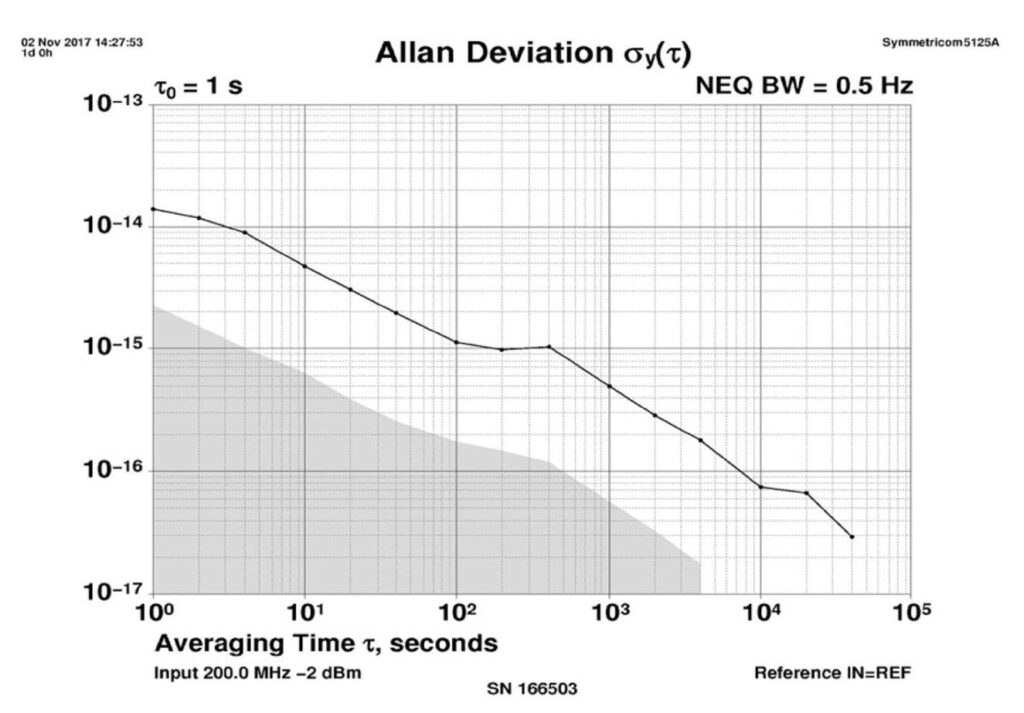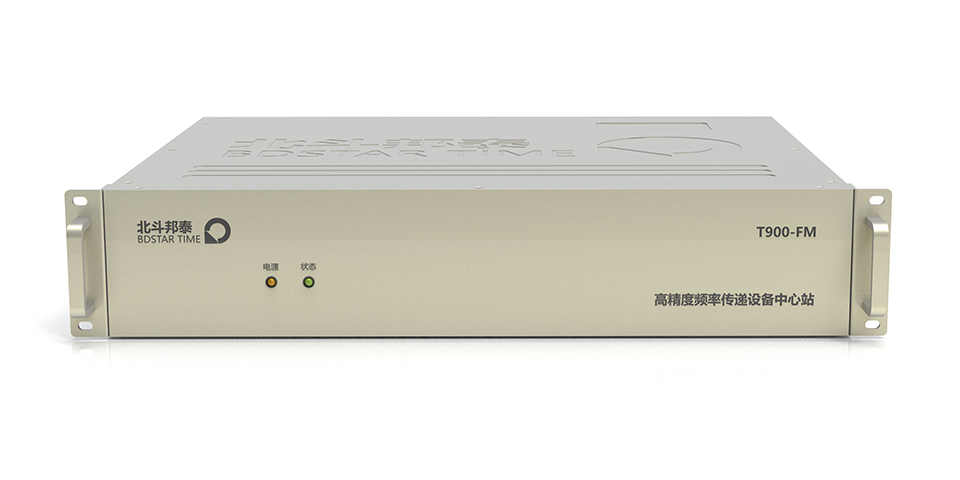T900-F Fiber Optic High Precision Frequency Transmission Equipment
Building a high-precision backbone transmission core for future time-frequency networks
BeiDou provides fiber optic frequency transmission technology for major national projects in the fields of deep space exploration and basic science, with a reproduction frequency of 1×10-16@10000S.
High-precision frequency transfer solution
The T900-F fiber-optic high-precision frequency transmission equipment is a multi-point high-precision frequency transmission system based on a ring network. The system consists of a central station and terminal stations. The central station primarily comprises an optoelectronic unit, a high-precision measurement and compensation unit, a time-frequency interface unit, and a circulator optical filter processing unit. The terminal station also primarily comprises an optoelectronic unit, a high-precision measurement and compensation unit, a time-frequency interface unit, and an optical filter processing unit. The central station of this system only needs to transmit the frequency signal in a closed loop and compensate for phase fluctuations across the entire link, eliminating the need for phase stabilization design for individual nodes. Whether adding or removing users within the network, only optical power needs to be adjusted, significantly improving system scalability and reducing maintenance. The reproduced frequency signal has a relative frequency stability of 3×10-14@1s and 1×10-16@10,000s.
It can be applied in basic science, deep space exploration, modern high-tech equipment and other fields.
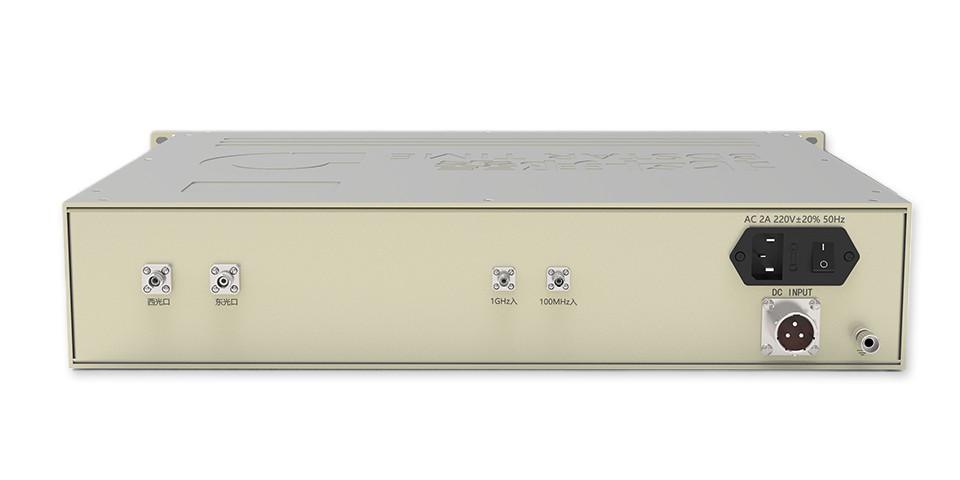
Important Features
This device is based on a closed-loop network architecture and has the advantages of high precision, strong expansion, and low maintenance. It is suitable for scientific research, deep space exploration, high-end equipment and other fields. The following are key features:
- Stable transmission: frequency stability reaches 3×10⁻¹⁴@1s, 1×10⁻¹⁶@10000s, meeting 10⁻¹⁷-level scientific research requirements
- High scalability: The central station uniformly compensates for phase fluctuations in the entire link, allowing for flexible node access and convenient maintenance.
- Precision compensation: measurement compensation accuracy reaches 0.01ps, with excellent noise floor
- Excellent phase noise: frequency signal phase noise is better than –145dBc/Hz@1kHz
- Multi-signal output: The terminal outputs 2 channels of 100MHz and 2 channels of 1GHz frequency signals
Application Scenario
Deep space exploration ground support system
Deep space missions like lunar and Mars exploration and space station relay require ground station networks to maintain frequency consistency across multiple tracking and control stations. Ring network high-precision frequency transmission equipment, with stability exceeding 10⁻¹⁶@10⁴s, ensures long-term phase consistency of the ground link frequency source, providing a core support for the ground segment of deep space exploration.
Precision measurement and control system for large scientific facilities
Large scientific facilities such as particle accelerators, telescope arrays, and quantum physics experiments require extremely high frequency stability. This device, through its fiber-optic ring network structure, can achieve picosecond-level phase-consistent frequency output across multiple terminals, providing reliable support for multi-channel synchronous sampling and precise experimental control.
Time and frequency coordination support for national defense systems
In modern warfare, time-frequency consistency is essential for ensuring coordinated operations in core equipment such as communications, radar, and navigation and guidance systems. This system offers anti-interference, low-noise, and centralized compensation design, adapting to the multi-node deployment and high-intensity operation demands of defense-related systems, and meeting stringent system-level frequency distribution requirements.
Construction of national-level timing backbone link
Aiming at the national time infrastructure, the device supports optical fiber frequency transmission over 50 kilometers and adopts a ring network self-compensation structure to ensure that each node can be dynamically accessed and flexibly expanded, realizing high-precision frequency synchronization between the National Time Service Center and units at all levels. It is a key node device for building a controllable and reliable time service system.
Performance Indicators
| Product Features | Specification name | Indicator parameters |
|---|---|---|
| Optical fiber time and frequency transmission equipment (transmitting terminal) | Frequency input | 10MHz/100MHz (sine wave) |
| Pulse input | 1PPS(3.3~5V) | |
| Optical fiber time and frequency transmission equipment (receiving terminal) | RF output | 10MHz、100MHz (sine wave) |
| Pulse output | 1PPS(3.3~5V) | |
| Transmission additional frequency uncertainty | 10MHz | 3E-14/s,5E-17/day |
| 100MHz | 1E-14/s,1E-17/day | |
| Transmitted additive phase noise | 10MHz | ≤-120dBc/Hz@1Hz |
| 100MHz | ≤-100dBc/Hz@1Hz | |
| monitor | Number of way | 1-way |
| Connectors | RJ45 | |
| Fiber optic transceiver | Number of way | 1-way |
| wavelength | 1550nm | |
| interface | FC flange | |
| Automatic lock time | Automatic capture | ≤3 minutes |
| Power supply voltage | Supply voltage | 220~240V AC |
| Power consumption | ≤100W | |
| Monitoring and Management | Management interface | Network port |
| Temperature requirements | Working temperature | 0℃→+50℃ |
| Storage temperature | –40℃→+70℃ | |
| relative humidity | ≤85% non-condensing (working conditions) | |
| Appearance | size | 19-inch 2U chassis |
System Block Diagram
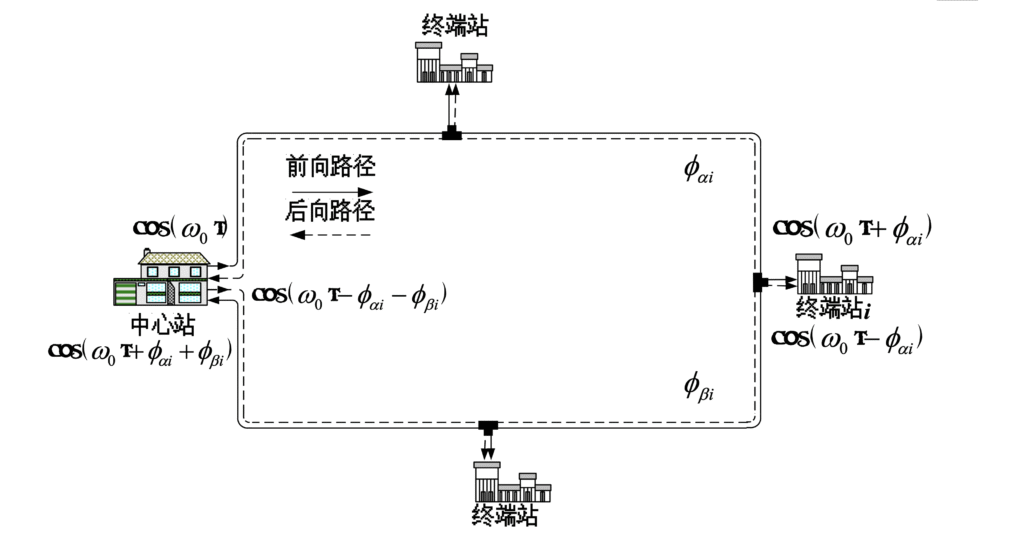
Measurement method
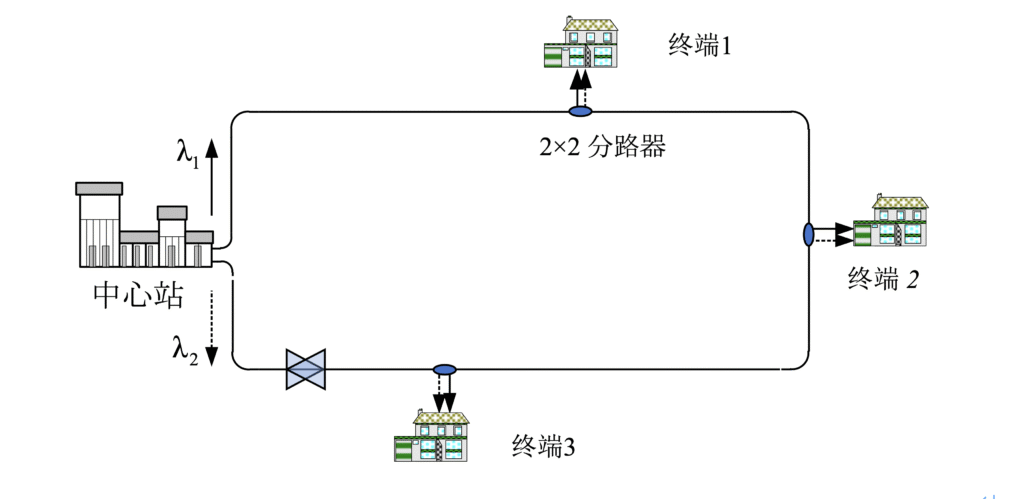
Test data
